-
MARKET FACTOR ANALYSIS
-
\r\n5.1. Value chain Analysis
-
\r\n5.2. Porter's Five Forces Analysis
-
\r\n5.2.1.
-
Bargaining Power of Suppliers
-
\r\n5.2.2.
-
Bargaining Power of Buyers
-
\r\n5.2.3. Threat
-
of New Entrants
-
\r\n5.2.4. Threat of Substitutes
-
\r\n5.2.5. Intensity of Rivalry
-
\r\n5.3. COVID-19 Impact Analysis
-
\r\n5.3.1.
-
Market Impact Analysis
-
\r\n5.3.2. Regional
-
Impact
-
\r\n5.3.3. Opportunity and Threat
-
Analysis
-
\r\n
-
\r\n
-
\r\n
-
\r\n6. FLUOROPOLYMER FILMS MARKET, BY APPLICATION (USD BILLION)
-
\r\n6.1. Electrical Insulation
-
\r\n6.2. Protective
-
Coatings
-
\r\n6.3. Gaskets and Seals
-
\r\n6.4.
-
Films for Medical Devices
-
\r\n7. FLUOROPOLYMER
-
FILMS MARKET, BY TYPE (USD BILLION)
-
\r\n7.1. Polytetrafluoroethylene
-
\r\n7.2. Polyvinylidene Fluoride
-
\r\n7.3.
-
Fluorinated Ethylene Propylene
-
\r\n8. FLUOROPOLYMER
-
FILMS MARKET, BY END USE INDUSTRY (USD BILLION)
-
\r\n8.1. Automotive
-
\r\n8.2. Aerospace
-
\r\n8.3. Medical
-
\r\n8.4. Electronics
-
\r\n8.5. Construction
-
\r\n9. FLUOROPOLYMER FILMS MARKET, BY REGIONAL
-
(USD BILLION)
-
\r\n9.1. North America
-
\r\n9.1.1.
-
US
-
\r\n9.1.2. Canada
-
\r\n9.2. Europe
-
\r\n9.2.1. Germany
-
\r\n9.2.2. UK
-
\r\n9.2.3.
-
France
-
\r\n9.2.4. Russia
-
\r\n9.2.5. Italy
-
\r\n9.2.6.
-
Spain
-
\r\n9.2.7. Rest of Europe
-
\r\n9.3. APAC
-
\r\n9.3.1. China
-
\r\n9.3.2. India
-
\r\n9.3.3.
-
Japan
-
\r\n9.3.4. South Korea
-
\r\n9.3.5. Malaysia
-
\r\n9.3.6.
-
Thailand
-
\r\n9.3.7. Indonesia
-
\r\n9.3.8. Rest of APAC
-
\r\n9.4. South America
-
\r\n9.4.1. Brazil
-
\r\n9.4.2. Mexico
-
\r\n9.4.3.
-
Argentina
-
\r\n9.4.4. Rest of South America
-
\r\n9.5. MEA
-
\r\n9.5.1.
-
GCC Countries
-
\r\n9.5.2. South Africa
-
\r\n9.5.3. Rest of MEA
-
\r\n
-
\r\n
-
\r\n
-
\r\n10.
-
COMPETITIVE LANDSCAPE
-
\r\n10.1. Overview
-
\r\n10.2.
-
Competitive Analysis
-
\r\n10.3. Market share Analysis
-
\r\n10.4. Major Growth Strategy in the Fluoropolymer Films Market
-
\r\n10.5. Competitive Benchmarking
-
\r\n10.6.
-
Leading Players in Terms of Number of Developments in the Fluoropolymer Films Market
-
\r\n10.7. Key developments and growth strategies
-
\r\n10.7.1.
-
New Product Launch/Service Deployment
-
\r\n10.7.2.
-
Merger & Acquisitions
-
\r\n10.7.3. Joint
-
Ventures
-
\r\n10.8. Major Players
-
Financial Matrix
-
\r\n10.8.1. Sales and Operating Income
-
\r\n10.8.2. Major Players R&D Expenditure.
-
\r\n11. COMPANY
-
PROFILES
-
\r\n11.1. SaintGobain
-
\r\n11.1.1.
-
Financial Overview
-
\r\n11.1.2. Products
-
Offered
-
\r\n11.1.3. Key Developments
-
\r\n11.1.4. SWOT Analysis
-
\r\n11.1.5. Key Strategies
-
\r\n11.2. Continental Industries
-
\r\n11.2.1. Financial
-
Overview
-
\r\n11.2.2. Products Offered
-
\r\n11.2.3. Key Developments
-
\r\n11.2.4. SWOT Analysis
-
\r\n11.2.5.
-
Key Strategies
-
\r\n11.3. Chemours
-
\r\n11.3.1. Financial Overview
-
\r\n11.3.2.
-
Products Offered
-
\r\n11.3.3. Key Developments
-
\r\n11.3.4. SWOT Analysis
-
\r\n11.3.5. Key Strategies
-
\r\n11.4. Daikin Industries
-
\r\n11.4.1. Financial
-
Overview
-
\r\n11.4.2. Products Offered
-
\r\n11.4.3. Key Developments
-
\r\n11.4.4. SWOT Analysis
-
\r\n11.4.5.
-
Key Strategies
-
\r\n11.5. RTP Company
-
\r\n11.5.1. Financial Overview
-
\r\n11.5.2.
-
Products Offered
-
\r\n11.5.3. Key Developments
-
\r\n11.5.4. SWOT Analysis
-
\r\n11.5.5. Key Strategies
-
\r\n11.6. ShinEtsu Chemical
-
\r\n11.6.1. Financial
-
Overview
-
\r\n11.6.2. Products Offered
-
\r\n11.6.3. Key Developments
-
\r\n11.6.4. SWOT Analysis
-
\r\n11.6.5.
-
Key Strategies
-
\r\n11.7. Gulf Fluor
-
\r\n11.7.1. Financial Overview
-
\r\n11.7.2.
-
Products Offered
-
\r\n11.7.3. Key Developments
-
\r\n11.7.4. SWOT Analysis
-
\r\n11.7.5. Key Strategies
-
\r\n11.8. Dupont
-
\r\n11.8.1. Financial Overview
-
\r\n11.8.2. Products Offered
-
\r\n11.8.3. Key Developments
-
\r\n11.8.4.
-
SWOT Analysis
-
\r\n11.8.5. Key Strategies
-
\r\n11.9. Kangde Xin Composite Material
-
\r\n11.9.1. Financial Overview
-
\r\n11.9.2.
-
Products Offered
-
\r\n11.9.3. Key Developments
-
\r\n11.9.4. SWOT Analysis
-
\r\n11.9.5. Key Strategies
-
\r\n11.10. Honeywell
-
\r\n11.10.1. Financial Overview
-
\r\n11.10.2. Products Offered
-
\r\n11.10.3. Key Developments
-
\r\n11.10.4.
-
SWOT Analysis
-
\r\n11.10.5. Key Strategies
-
\r\n11.11. AGC Inc
-
\r\n11.11.1.
-
Financial Overview
-
\r\n11.11.2. Products
-
Offered
-
\r\n11.11.3. Key Developments
-
\r\n11.11.4. SWOT Analysis
-
\r\n11.11.5. Key Strategies
-
\r\n11.12. 3M
-
\r\n11.12.1. Financial Overview
-
\r\n11.12.2. Products Offered
-
\r\n11.12.3. Key Developments
-
\r\n11.12.4.
-
SWOT Analysis
-
\r\n11.12.5. Key Strategies
-
\r\n11.13. Mitsui Chemicals
-
\r\n11.13.1.
-
Financial Overview
-
\r\n11.13.2. Products
-
Offered
-
\r\n11.13.3. Key Developments
-
\r\n11.13.4. SWOT Analysis
-
\r\n11.13.5. Key Strategies
-
\r\n11.14. Solvay
-
\r\n11.14.1. Financial Overview
-
\r\n11.14.2. Products Offered
-
\r\n11.14.3. Key Developments
-
\r\n11.14.4.
-
SWOT Analysis
-
\r\n11.14.5. Key Strategies
-
\r\n11.15. W. L. Gore & Associates
-
\r\n11.15.1. Financial Overview
-
\r\n11.15.2.
-
Products Offered
-
\r\n11.15.3. Key Developments
-
\r\n11.15.4. SWOT Analysis
-
\r\n11.15.5. Key Strategies
-
\r\n12. APPENDIX
-
\r\n12.1. References
-
\r\n12.2. Related Reports
-
\r\nLIST
-
OF TABLES
-
\r\n
-
\r\nTABLE 1. LIST OF ASSUMPTIONS
-
\r\nTABLE
-
NORTH AMERICA FLUOROPOLYMER FILMS MARKET SIZE ESTIMATES & FORECAST, BY APPLICATION,
-
\r\nTABLE 3. NORTH AMERICA FLUOROPOLYMER
-
FILMS MARKET SIZE ESTIMATES & FORECAST, BY TYPE, 2019-2035 (USD BILLIONS)
-
\r\nTABLE 4. NORTH AMERICA FLUOROPOLYMER FILMS MARKET SIZE ESTIMATES
-
& FORECAST, BY END USE INDUSTRY, 2019-2035 (USD BILLIONS)
-
\r\nTABLE
-
NORTH AMERICA FLUOROPOLYMER FILMS MARKET SIZE ESTIMATES & FORECAST, BY REGIONAL,
-
\r\nTABLE 6. US FLUOROPOLYMER FILMS
-
MARKET SIZE ESTIMATES & FORECAST, BY APPLICATION, 2019-2035 (USD BILLIONS)
-
\r\nTABLE 7. US FLUOROPOLYMER FILMS MARKET SIZE ESTIMATES & FORECAST,
-
BY TYPE, 2019-2035 (USD BILLIONS)
-
\r\nTABLE 8. US FLUOROPOLYMER
-
FILMS MARKET SIZE ESTIMATES & FORECAST, BY END USE INDUSTRY, 2019-2035 (USD
-
BILLIONS)
-
\r\nTABLE 9. US FLUOROPOLYMER FILMS MARKET SIZE ESTIMATES
-
& FORECAST, BY REGIONAL, 2019-2035 (USD BILLIONS)
-
\r\nTABLE
-
CANADA FLUOROPOLYMER FILMS MARKET SIZE ESTIMATES & FORECAST, BY APPLICATION,
-
\r\nTABLE 11. CANADA FLUOROPOLYMER FILMS
-
MARKET SIZE ESTIMATES & FORECAST, BY TYPE, 2019-2035 (USD BILLIONS)
-
\r\nTABLE
-
CANADA FLUOROPOLYMER FILMS MARKET SIZE ESTIMATES & FORECAST, BY END USE
-
INDUSTRY, 2019-2035 (USD BILLIONS)
-
\r\nTABLE 13. CANADA FLUOROPOLYMER
-
FILMS MARKET SIZE ESTIMATES & FORECAST, BY REGIONAL, 2019-2035 (USD BILLIONS)
-
\r\nTABLE 14. EUROPE FLUOROPOLYMER FILMS MARKET SIZE ESTIMATES &
-
FORECAST, BY APPLICATION, 2019-2035 (USD BILLIONS)
-
\r\nTABLE
-
EUROPE FLUOROPOLYMER FILMS MARKET SIZE ESTIMATES & FORECAST, BY TYPE, 2019-2035
-
(USD BILLIONS)
-
\r\nTABLE 16. EUROPE FLUOROPOLYMER FILMS MARKET
-
SIZE ESTIMATES & FORECAST, BY END USE INDUSTRY, 2019-2035 (USD BILLIONS)
-
\r\nTABLE 17. EUROPE FLUOROPOLYMER FILMS MARKET SIZE ESTIMATES &
-
FORECAST, BY REGIONAL, 2019-2035 (USD BILLIONS)
-
\r\nTABLE 18.
-
GERMANY FLUOROPOLYMER FILMS MARKET SIZE ESTIMATES & FORECAST, BY APPLICATION,
-
\r\nTABLE 19. GERMANY FLUOROPOLYMER
-
FILMS MARKET SIZE ESTIMATES & FORECAST, BY TYPE, 2019-2035 (USD BILLIONS)
-
\r\nTABLE 20. GERMANY FLUOROPOLYMER FILMS MARKET SIZE ESTIMATES &
-
FORECAST, BY END USE INDUSTRY, 2019-2035 (USD BILLIONS)
-
\r\nTABLE
-
GERMANY FLUOROPOLYMER FILMS MARKET SIZE ESTIMATES & FORECAST, BY REGIONAL,
-
\r\nTABLE 22. UK FLUOROPOLYMER FILMS
-
MARKET SIZE ESTIMATES & FORECAST, BY APPLICATION, 2019-2035 (USD BILLIONS)
-
\r\nTABLE 23. UK FLUOROPOLYMER FILMS MARKET SIZE ESTIMATES & FORECAST,
-
BY TYPE, 2019-2035 (USD BILLIONS)
-
\r\nTABLE 24. UK FLUOROPOLYMER
-
FILMS MARKET SIZE ESTIMATES & FORECAST, BY END USE INDUSTRY, 2019-2035 (USD
-
BILLIONS)
-
\r\nTABLE 25. UK FLUOROPOLYMER FILMS MARKET SIZE ESTIMATES
-
& FORECAST, BY REGIONAL, 2019-2035 (USD BILLIONS)
-
\r\nTABLE
-
FRANCE FLUOROPOLYMER FILMS MARKET SIZE ESTIMATES & FORECAST, BY APPLICATION,
-
\r\nTABLE 27. FRANCE FLUOROPOLYMER FILMS
-
MARKET SIZE ESTIMATES & FORECAST, BY TYPE, 2019-2035 (USD BILLIONS)
-
\r\nTABLE
-
FRANCE FLUOROPOLYMER FILMS MARKET SIZE ESTIMATES & FORECAST, BY END USE
-
INDUSTRY, 2019-2035 (USD BILLIONS)
-
\r\nTABLE 29. FRANCE FLUOROPOLYMER
-
FILMS MARKET SIZE ESTIMATES & FORECAST, BY REGIONAL, 2019-2035 (USD BILLIONS)
-
\r\nTABLE 30. RUSSIA FLUOROPOLYMER FILMS MARKET SIZE ESTIMATES &
-
FORECAST, BY APPLICATION, 2019-2035 (USD BILLIONS)
-
\r\nTABLE
-
RUSSIA FLUOROPOLYMER FILMS MARKET SIZE ESTIMATES & FORECAST, BY TYPE, 2019-2035
-
(USD BILLIONS)
-
\r\nTABLE 32. RUSSIA FLUOROPOLYMER FILMS MARKET
-
SIZE ESTIMATES & FORECAST, BY END USE INDUSTRY, 2019-2035 (USD BILLIONS)
-
\r\nTABLE 33. RUSSIA FLUOROPOLYMER FILMS MARKET SIZE ESTIMATES &
-
FORECAST, BY REGIONAL, 2019-2035 (USD BILLIONS)
-
\r\nTABLE 34.
-
ITALY FLUOROPOLYMER FILMS MARKET SIZE ESTIMATES & FORECAST, BY APPLICATION,
-
\r\nTABLE 35. ITALY FLUOROPOLYMER FILMS
-
MARKET SIZE ESTIMATES & FORECAST, BY TYPE, 2019-2035 (USD BILLIONS)
-
\r\nTABLE
-
ITALY FLUOROPOLYMER FILMS MARKET SIZE ESTIMATES & FORECAST, BY END USE INDUSTRY,
-
\r\nTABLE 37. ITALY FLUOROPOLYMER FILMS
-
MARKET SIZE ESTIMATES & FORECAST, BY REGIONAL, 2019-2035 (USD BILLIONS)
-
\r\nTABLE 38. SPAIN FLUOROPOLYMER FILMS MARKET SIZE ESTIMATES &
-
FORECAST, BY APPLICATION, 2019-2035 (USD BILLIONS)
-
\r\nTABLE
-
SPAIN FLUOROPOLYMER FILMS MARKET SIZE ESTIMATES & FORECAST, BY TYPE, 2019-2035
-
(USD BILLIONS)
-
\r\nTABLE 40. SPAIN FLUOROPOLYMER FILMS MARKET
-
SIZE ESTIMATES & FORECAST, BY END USE INDUSTRY, 2019-2035 (USD BILLIONS)
-
\r\nTABLE 41. SPAIN FLUOROPOLYMER FILMS MARKET SIZE ESTIMATES &
-
FORECAST, BY REGIONAL, 2019-2035 (USD BILLIONS)
-
\r\nTABLE 42.
-
REST OF EUROPE FLUOROPOLYMER FILMS MARKET SIZE ESTIMATES & FORECAST, BY APPLICATION,
-
\r\nTABLE 43. REST OF EUROPE FLUOROPOLYMER
-
FILMS MARKET SIZE ESTIMATES & FORECAST, BY TYPE, 2019-2035 (USD BILLIONS)
-
\r\nTABLE 44. REST OF EUROPE FLUOROPOLYMER FILMS MARKET SIZE ESTIMATES
-
& FORECAST, BY END USE INDUSTRY, 2019-2035 (USD BILLIONS)
-
\r\nTABLE
-
REST OF EUROPE FLUOROPOLYMER FILMS MARKET SIZE ESTIMATES & FORECAST, BY
-
REGIONAL, 2019-2035 (USD BILLIONS)
-
\r\nTABLE 46. APAC FLUOROPOLYMER
-
FILMS MARKET SIZE ESTIMATES & FORECAST, BY APPLICATION, 2019-2035 (USD BILLIONS)
-
\r\nTABLE 47. APAC FLUOROPOLYMER FILMS MARKET SIZE ESTIMATES &
-
FORECAST, BY TYPE, 2019-2035 (USD BILLIONS)
-
\r\nTABLE 48. APAC
-
FLUOROPOLYMER FILMS MARKET SIZE ESTIMATES & FORECAST, BY END USE INDUSTRY, 2019-2035
-
(USD BILLIONS)
-
\r\nTABLE 49. APAC FLUOROPOLYMER FILMS MARKET
-
SIZE ESTIMATES & FORECAST, BY REGIONAL, 2019-2035 (USD BILLIONS)
-
\r\nTABLE
-
CHINA FLUOROPOLYMER FILMS MARKET SIZE ESTIMATES & FORECAST, BY APPLICATION,
-
\r\nTABLE 51. CHINA FLUOROPOLYMER FILMS
-
MARKET SIZE ESTIMATES & FORECAST, BY TYPE, 2019-2035 (USD BILLIONS)
-
\r\nTABLE
-
CHINA FLUOROPOLYMER FILMS MARKET SIZE ESTIMATES & FORECAST, BY END USE INDUSTRY,
-
\r\nTABLE 53. CHINA FLUOROPOLYMER FILMS
-
MARKET SIZE ESTIMATES & FORECAST, BY REGIONAL, 2019-2035 (USD BILLIONS)
-
\r\nTABLE 54. INDIA FLUOROPOLYMER FILMS MARKET SIZE ESTIMATES &
-
FORECAST, BY APPLICATION, 2019-2035 (USD BILLIONS)
-
\r\nTABLE
-
INDIA FLUOROPOLYMER FILMS MARKET SIZE ESTIMATES & FORECAST, BY TYPE, 2019-2035
-
(USD BILLIONS)
-
\r\nTABLE 56. INDIA FLUOROPOLYMER FILMS MARKET
-
SIZE ESTIMATES & FORECAST, BY END USE INDUSTRY, 2019-2035 (USD BILLIONS)
-
\r\nTABLE 57. INDIA FLUOROPOLYMER FILMS MARKET SIZE ESTIMATES &
-
FORECAST, BY REGIONAL, 2019-2035 (USD BILLIONS)
-
\r\nTABLE 58.
-
JAPAN FLUOROPOLYMER FILMS MARKET SIZE ESTIMATES & FORECAST, BY APPLICATION,
-
\r\nTABLE 59. JAPAN FLUOROPOLYMER FILMS
-
MARKET SIZE ESTIMATES & FORECAST, BY TYPE, 2019-2035 (USD BILLIONS)
-
\r\nTABLE
-
JAPAN FLUOROPOLYMER FILMS MARKET SIZE ESTIMATES & FORECAST, BY END USE INDUSTRY,
-
\r\nTABLE 61. JAPAN FLUOROPOLYMER FILMS
-
MARKET SIZE ESTIMATES & FORECAST, BY REGIONAL, 2019-2035 (USD BILLIONS)
-
\r\nTABLE 62. SOUTH KOREA FLUOROPOLYMER FILMS MARKET SIZE ESTIMATES
-
& FORECAST, BY APPLICATION, 2019-2035 (USD BILLIONS)
-
\r\nTABLE
-
SOUTH KOREA FLUOROPOLYMER FILMS MARKET SIZE ESTIMATES & FORECAST, BY TYPE,
-
\r\nTABLE 64. SOUTH KOREA FLUOROPOLYMER
-
FILMS MARKET SIZE ESTIMATES & FORECAST, BY END USE INDUSTRY, 2019-2035 (USD
-
BILLIONS)
-
\r\nTABLE 65. SOUTH KOREA FLUOROPOLYMER FILMS MARKET
-
SIZE ESTIMATES & FORECAST, BY REGIONAL, 2019-2035 (USD BILLIONS)
-
\r\nTABLE
-
MALAYSIA FLUOROPOLYMER FILMS MARKET SIZE ESTIMATES & FORECAST, BY APPLICATION,
-
\r\nTABLE 67. MALAYSIA FLUOROPOLYMER
-
FILMS MARKET SIZE ESTIMATES & FORECAST, BY TYPE, 2019-2035 (USD BILLIONS)
-
\r\nTABLE 68. MALAYSIA FLUOROPOLYMER FILMS MARKET SIZE ESTIMATES &
-
FORECAST, BY END USE INDUSTRY, 2019-2035 (USD BILLIONS)
-
\r\nTABLE
-
MALAYSIA FLUOROPOLYMER FILMS MARKET SIZE ESTIMATES & FORECAST, BY REGIONAL,
-
\r\nTABLE 70. THAILAND FLUOROPOLYMER
-
FILMS MARKET SIZE ESTIMATES & FORECAST, BY APPLICATION, 2019-2035 (USD BILLIONS)
-
\r\nTABLE 71. THAILAND FLUOROPOLYMER FILMS MARKET SIZE ESTIMATES &
-
FORECAST, BY TYPE, 2019-2035 (USD BILLIONS)
-
\r\nTABLE 72. THAILAND
-
FLUOROPOLYMER FILMS MARKET SIZE ESTIMATES & FORECAST, BY END USE INDUSTRY, 2019-2035
-
(USD BILLIONS)
-
\r\nTABLE 73. THAILAND FLUOROPOLYMER FILMS MARKET
-
SIZE ESTIMATES & FORECAST, BY REGIONAL, 2019-2035 (USD BILLIONS)
-
\r\nTABLE
-
INDONESIA FLUOROPOLYMER FILMS MARKET SIZE ESTIMATES & FORECAST, BY APPLICATION,
-
\r\nTABLE 75. INDONESIA FLUOROPOLYMER
-
FILMS MARKET SIZE ESTIMATES & FORECAST, BY TYPE, 2019-2035 (USD BILLIONS)
-
\r\nTABLE 76. INDONESIA FLUOROPOLYMER FILMS MARKET SIZE ESTIMATES &
-
FORECAST, BY END USE INDUSTRY, 2019-2035 (USD BILLIONS)
-
\r\nTABLE
-
INDONESIA FLUOROPOLYMER FILMS MARKET SIZE ESTIMATES & FORECAST, BY REGIONAL,
-
\r\nTABLE 78. REST OF APAC FLUOROPOLYMER
-
FILMS MARKET SIZE ESTIMATES & FORECAST, BY APPLICATION, 2019-2035 (USD BILLIONS)
-
\r\nTABLE 79. REST OF APAC FLUOROPOLYMER FILMS MARKET SIZE ESTIMATES
-
& FORECAST, BY TYPE, 2019-2035 (USD BILLIONS)
-
\r\nTABLE 80.
-
REST OF APAC FLUOROPOLYMER FILMS MARKET SIZE ESTIMATES & FORECAST, BY END USE
-
INDUSTRY, 2019-2035 (USD BILLIONS)
-
\r\nTABLE 81. REST OF APAC
-
FLUOROPOLYMER FILMS MARKET SIZE ESTIMATES & FORECAST, BY REGIONAL, 2019-2035
-
(USD BILLIONS)
-
\r\nTABLE 82. SOUTH AMERICA FLUOROPOLYMER FILMS
-
MARKET SIZE ESTIMATES & FORECAST, BY APPLICATION, 2019-2035 (USD BILLIONS)
-
\r\nTABLE 83. SOUTH AMERICA FLUOROPOLYMER FILMS MARKET SIZE ESTIMATES
-
& FORECAST, BY TYPE, 2019-2035 (USD BILLIONS)
-
\r\nTABLE 84.
-
SOUTH AMERICA FLUOROPOLYMER FILMS MARKET SIZE ESTIMATES & FORECAST, BY END USE
-
INDUSTRY, 2019-2035 (USD BILLIONS)
-
\r\nTABLE 85. SOUTH AMERICA
-
FLUOROPOLYMER FILMS MARKET SIZE ESTIMATES & FORECAST, BY REGIONAL, 2019-2035
-
(USD BILLIONS)
-
\r\nTABLE 86. BRAZIL FLUOROPOLYMER FILMS MARKET
-
SIZE ESTIMATES & FORECAST, BY APPLICATION, 2019-2035 (USD BILLIONS)
-
\r\nTABLE
-
BRAZIL FLUOROPOLYMER FILMS MARKET SIZE ESTIMATES & FORECAST, BY TYPE, 2019-2035
-
(USD BILLIONS)
-
\r\nTABLE 88. BRAZIL FLUOROPOLYMER FILMS MARKET
-
SIZE ESTIMATES & FORECAST, BY END USE INDUSTRY, 2019-2035 (USD BILLIONS)
-
\r\nTABLE 89. BRAZIL FLUOROPOLYMER FILMS MARKET SIZE ESTIMATES &
-
FORECAST, BY REGIONAL, 2019-2035 (USD BILLIONS)
-
\r\nTABLE 90.
-
MEXICO FLUOROPOLYMER FILMS MARKET SIZE ESTIMATES & FORECAST, BY APPLICATION,
-
\r\nTABLE 91. MEXICO FLUOROPOLYMER FILMS
-
MARKET SIZE ESTIMATES & FORECAST, BY TYPE, 2019-2035 (USD BILLIONS)
-
\r\nTABLE
-
MEXICO FLUOROPOLYMER FILMS MARKET SIZE ESTIMATES & FORECAST, BY END USE
-
INDUSTRY, 2019-2035 (USD BILLIONS)
-
\r\nTABLE 93. MEXICO FLUOROPOLYMER
-
FILMS MARKET SIZE ESTIMATES & FORECAST, BY REGIONAL, 2019-2035 (USD BILLIONS)
-
\r\nTABLE 94. ARGENTINA FLUOROPOLYMER FILMS MARKET SIZE ESTIMATES &
-
FORECAST, BY APPLICATION, 2019-2035 (USD BILLIONS)
-
\r\nTABLE
-
ARGENTINA FLUOROPOLYMER FILMS MARKET SIZE ESTIMATES & FORECAST, BY TYPE,
-
\r\nTABLE 96. ARGENTINA FLUOROPOLYMER
-
FILMS MARKET SIZE ESTIMATES & FORECAST, BY END USE INDUSTRY, 2019-2035 (USD
-
BILLIONS)
-
\r\nTABLE 97. ARGENTINA FLUOROPOLYMER FILMS MARKET
-
SIZE ESTIMATES & FORECAST, BY REGIONAL, 2019-2035 (USD BILLIONS)
-
\r\nTABLE
-
REST OF SOUTH AMERICA FLUOROPOLYMER FILMS MARKET SIZE ESTIMATES & FORECAST,
-
BY APPLICATION, 2019-2035 (USD BILLIONS)
-
\r\nTABLE 99. REST OF
-
SOUTH AMERICA FLUOROPOLYMER FILMS MARKET SIZE ESTIMATES & FORECAST, BY TYPE,
-
\r\nTABLE 100. REST OF SOUTH AMERICA
-
FLUOROPOLYMER FILMS MARKET SIZE ESTIMATES & FORECAST, BY END USE INDUSTRY, 2019-2035
-
(USD BILLIONS)
-
\r\nTABLE 101. REST OF SOUTH AMERICA FLUOROPOLYMER
-
FILMS MARKET SIZE ESTIMATES & FORECAST, BY REGIONAL, 2019-2035 (USD BILLIONS)
-
\r\nTABLE 102. MEA FLUOROPOLYMER FILMS MARKET SIZE ESTIMATES &
-
FORECAST, BY APPLICATION, 2019-2035 (USD BILLIONS)
-
\r\nTABLE
-
MEA FLUOROPOLYMER FILMS MARKET SIZE ESTIMATES & FORECAST, BY TYPE, 2019-2035
-
(USD BILLIONS)
-
\r\nTABLE 104. MEA FLUOROPOLYMER FILMS MARKET
-
SIZE ESTIMATES & FORECAST, BY END USE INDUSTRY, 2019-2035 (USD BILLIONS)
-
\r\nTABLE 105. MEA FLUOROPOLYMER FILMS MARKET SIZE ESTIMATES &
-
FORECAST, BY REGIONAL, 2019-2035 (USD BILLIONS)
-
\r\nTABLE 106.
-
GCC COUNTRIES FLUOROPOLYMER FILMS MARKET SIZE ESTIMATES & FORECAST, BY APPLICATION,
-
\r\nTABLE 107. GCC COUNTRIES FLUOROPOLYMER
-
FILMS MARKET SIZE ESTIMATES & FORECAST, BY TYPE, 2019-2035 (USD BILLIONS)
-
\r\nTABLE 108. GCC COUNTRIES FLUOROPOLYMER FILMS MARKET SIZE ESTIMATES
-
& FORECAST, BY END USE INDUSTRY, 2019-2035 (USD BILLIONS)
-
\r\nTABLE
-
GCC COUNTRIES FLUOROPOLYMER FILMS MARKET SIZE ESTIMATES & FORECAST, BY
-
REGIONAL, 2019-2035 (USD BILLIONS)
-
\r\nTABLE 110. SOUTH AFRICA
-
FLUOROPOLYMER FILMS MARKET SIZE ESTIMATES & FORECAST, BY APPLICATION, 2019-2035
-
(USD BILLIONS)
-
\r\nTABLE 111. SOUTH AFRICA FLUOROPOLYMER FILMS
-
MARKET SIZE ESTIMATES & FORECAST, BY TYPE, 2019-2035 (USD BILLIONS)
-
\r\nTABLE
-
SOUTH AFRICA FLUOROPOLYMER FILMS MARKET SIZE ESTIMATES & FORECAST, BY END
-
USE INDUSTRY, 2019-2035 (USD BILLIONS)
-
\r\nTABLE 113. SOUTH AFRICA
-
FLUOROPOLYMER FILMS MARKET SIZE ESTIMATES & FORECAST, BY REGIONAL, 2019-2035
-
(USD BILLIONS)
-
\r\nTABLE 114. REST OF MEA FLUOROPOLYMER FILMS
-
MARKET SIZE ESTIMATES & FORECAST, BY APPLICATION, 2019-2035 (USD BILLIONS)
-
\r\nTABLE 115. REST OF MEA FLUOROPOLYMER FILMS MARKET SIZE ESTIMATES
-
& FORECAST, BY TYPE, 2019-2035 (USD BILLIONS)
-
\r\nTABLE 116.
-
REST OF MEA FLUOROPOLYMER FILMS MARKET SIZE ESTIMATES & FORECAST, BY END USE
-
INDUSTRY, 2019-2035 (USD BILLIONS)
-
\r\nTABLE 117. REST OF MEA
-
FLUOROPOLYMER FILMS MARKET SIZE ESTIMATES & FORECAST, BY REGIONAL, 2019-2035
-
(USD BILLIONS)
-
\r\nTABLE 118. PRODUCT LAUNCH/PRODUCT DEVELOPMENT/APPROVAL
-
\r\nTABLE 119. ACQUISITION/PARTNERSHIP
-
\r\n
-
\r\n
-
\r\n
-
\r\n
-
\r\n
-
\r\n
-
\r\n
-
\r\n
-
\r\n
-
\r\n
-
\r\n
-
\r\n
-
\r\n
-
\r\n
-
\r\n
-
\r\n
-
\r\n
-
\r\n
-
\r\n
-
\r\n
-
\r\n
-
\r\n
-
\r\n
-
\r\n
-
\r\n
-
\r\n
-
\r\n
-
\r\n
-
\r\n
-
\r\nLIST
-
OF FIGURES
-
\r\n
-
\r\nFIGURE 1. MARKET SYNOPSIS
-
\r\nFIGURE
-
NORTH AMERICA FLUOROPOLYMER FILMS MARKET ANALYSIS
-
\r\nFIGURE 3. US
-
FLUOROPOLYMER FILMS MARKET ANALYSIS BY APPLICATION
-
\r\nFIGURE 4. US
-
FLUOROPOLYMER FILMS MARKET ANALYSIS BY TYPE
-
\r\nFIGURE 5. US FLUOROPOLYMER
-
FILMS MARKET ANALYSIS BY END USE INDUSTRY
-
\r\nFIGURE 6. US FLUOROPOLYMER
-
FILMS MARKET ANALYSIS BY REGIONAL
-
\r\nFIGURE 7. CANADA FLUOROPOLYMER
-
FILMS MARKET ANALYSIS BY APPLICATION
-
\r\nFIGURE 8. CANADA FLUOROPOLYMER
-
FILMS MARKET ANALYSIS BY TYPE
-
\r\nFIGURE 9. CANADA FLUOROPOLYMER FILMS
-
MARKET ANALYSIS BY END USE INDUSTRY
-
\r\nFIGURE 10. CANADA FLUOROPOLYMER
-
FILMS MARKET ANALYSIS BY REGIONAL
-
\r\nFIGURE 11. EUROPE FLUOROPOLYMER
-
FILMS MARKET ANALYSIS
-
\r\nFIGURE 12. GERMANY FLUOROPOLYMER FILMS MARKET
-
ANALYSIS BY APPLICATION
-
\r\nFIGURE 13. GERMANY FLUOROPOLYMER FILMS MARKET
-
ANALYSIS BY TYPE
-
\r\nFIGURE 14. GERMANY FLUOROPOLYMER FILMS MARKET ANALYSIS
-
BY END USE INDUSTRY
-
\r\nFIGURE 15. GERMANY FLUOROPOLYMER FILMS MARKET
-
ANALYSIS BY REGIONAL
-
\r\nFIGURE 16. UK FLUOROPOLYMER FILMS MARKET ANALYSIS
-
BY APPLICATION
-
\r\nFIGURE 17. UK FLUOROPOLYMER FILMS MARKET ANALYSIS
-
BY TYPE
-
\r\nFIGURE 18. UK FLUOROPOLYMER FILMS MARKET ANALYSIS BY END
-
USE INDUSTRY
-
\r\nFIGURE 19. UK FLUOROPOLYMER FILMS MARKET ANALYSIS BY
-
REGIONAL
-
\r\nFIGURE 20. FRANCE FLUOROPOLYMER FILMS MARKET ANALYSIS BY
-
APPLICATION
-
\r\nFIGURE 21. FRANCE FLUOROPOLYMER FILMS MARKET ANALYSIS
-
BY TYPE
-
\r\nFIGURE 22. FRANCE FLUOROPOLYMER FILMS MARKET ANALYSIS BY
-
END USE INDUSTRY
-
\r\nFIGURE 23. FRANCE FLUOROPOLYMER FILMS MARKET ANALYSIS
-
BY REGIONAL
-
\r\nFIGURE 24. RUSSIA FLUOROPOLYMER FILMS MARKET ANALYSIS
-
BY APPLICATION
-
\r\nFIGURE 25. RUSSIA FLUOROPOLYMER FILMS MARKET ANALYSIS
-
BY TYPE
-
\r\nFIGURE 26. RUSSIA FLUOROPOLYMER FILMS MARKET ANALYSIS BY
-
END USE INDUSTRY
-
\r\nFIGURE 27. RUSSIA FLUOROPOLYMER FILMS MARKET ANALYSIS
-
BY REGIONAL
-
\r\nFIGURE 28. ITALY FLUOROPOLYMER FILMS MARKET ANALYSIS
-
BY APPLICATION
-
\r\nFIGURE 29. ITALY FLUOROPOLYMER FILMS MARKET ANALYSIS
-
BY TYPE
-
\r\nFIGURE 30. ITALY FLUOROPOLYMER FILMS MARKET ANALYSIS BY
-
END USE INDUSTRY
-
\r\nFIGURE 31. ITALY FLUOROPOLYMER FILMS MARKET ANALYSIS
-
BY REGIONAL
-
\r\nFIGURE 32. SPAIN FLUOROPOLYMER FILMS MARKET ANALYSIS
-
BY APPLICATION
-
\r\nFIGURE 33. SPAIN FLUOROPOLYMER FILMS MARKET ANALYSIS
-
BY TYPE
-
\r\nFIGURE 34. SPAIN FLUOROPOLYMER FILMS MARKET ANALYSIS BY
-
END USE INDUSTRY
-
\r\nFIGURE 35. SPAIN FLUOROPOLYMER FILMS MARKET ANALYSIS
-
BY REGIONAL
-
\r\nFIGURE 36. REST OF EUROPE FLUOROPOLYMER FILMS MARKET
-
ANALYSIS BY APPLICATION
-
\r\nFIGURE 37. REST OF EUROPE FLUOROPOLYMER
-
FILMS MARKET ANALYSIS BY TYPE
-
\r\nFIGURE 38. REST OF EUROPE FLUOROPOLYMER
-
FILMS MARKET ANALYSIS BY END USE INDUSTRY
-
\r\nFIGURE 39. REST OF EUROPE
-
FLUOROPOLYMER FILMS MARKET ANALYSIS BY REGIONAL
-
\r\nFIGURE 40. APAC
-
FLUOROPOLYMER FILMS MARKET ANALYSIS
-
\r\nFIGURE 41. CHINA FLUOROPOLYMER
-
FILMS MARKET ANALYSIS BY APPLICATION
-
\r\nFIGURE 42. CHINA FLUOROPOLYMER
-
FILMS MARKET ANALYSIS BY TYPE
-
\r\nFIGURE 43. CHINA FLUOROPOLYMER FILMS
-
MARKET ANALYSIS BY END USE INDUSTRY
-
\r\nFIGURE 44. CHINA FLUOROPOLYMER
-
FILMS MARKET ANALYSIS BY REGIONAL
-
\r\nFIGURE 45. INDIA FLUOROPOLYMER
-
FILMS MARKET ANALYSIS BY APPLICATION
-
\r\nFIGURE 46. INDIA FLUOROPOLYMER
-
FILMS MARKET ANALYSIS BY TYPE
-
\r\nFIGURE 47. INDIA FLUOROPOLYMER FILMS
-
MARKET ANALYSIS BY END USE INDUSTRY
-
\r\nFIGURE 48. INDIA FLUOROPOLYMER
-
FILMS MARKET ANALYSIS BY REGIONAL
-
\r\nFIGURE 49. JAPAN FLUOROPOLYMER
-
FILMS MARKET ANALYSIS BY APPLICATION
-
\r\nFIGURE 50. JAPAN FLUOROPOLYMER
-
FILMS MARKET ANALYSIS BY TYPE
-
\r\nFIGURE 51. JAPAN FLUOROPOLYMER FILMS
-
MARKET ANALYSIS BY END USE INDUSTRY
-
\r\nFIGURE 52. JAPAN FLUOROPOLYMER
-
FILMS MARKET ANALYSIS BY REGIONAL
-
\r\nFIGURE 53. SOUTH KOREA FLUOROPOLYMER
-
FILMS MARKET ANALYSIS BY APPLICATION
-
\r\nFIGURE 54. SOUTH KOREA FLUOROPOLYMER
-
FILMS MARKET ANALYSIS BY TYPE
-
\r\nFIGURE 55. SOUTH KOREA FLUOROPOLYMER
-
FILMS MARKET ANALYSIS BY END USE INDUSTRY
-
\r\nFIGURE 56. SOUTH KOREA
-
FLUOROPOLYMER FILMS MARKET ANALYSIS BY REGIONAL
-
\r\nFIGURE 57. MALAYSIA
-
FLUOROPOLYMER FILMS MARKET ANALYSIS BY APPLICATION
-
\r\nFIGURE 58. MALAYSIA
-
FLUOROPOLYMER FILMS MARKET ANALYSIS BY TYPE
-
\r\nFIGURE 59. MALAYSIA
-
FLUOROPOLYMER FILMS MARKET ANALYSIS BY END USE INDUSTRY
-
\r\nFIGURE 60.
-
MALAYSIA FLUOROPOLYMER FILMS MARKET ANALYSIS BY REGIONAL
-
\r\nFIGURE
-
THAILAND FLUOROPOLYMER FILMS MARKET ANALYSIS BY APPLICATION
-
\r\nFIGURE
-
THAILAND FLUOROPOLYMER FILMS MARKET ANALYSIS BY TYPE
-
\r\nFIGURE
-
THAILAND FLUOROPOLYMER FILMS MARKET ANALYSIS BY END USE INDUSTRY
-
\r\nFIGURE
-
THAILAND FLUOROPOLYMER FILMS MARKET ANALYSIS BY REGIONAL
-
\r\nFIGURE
-
INDONESIA FLUOROPOLYMER FILMS MARKET ANALYSIS BY APPLICATION
-
\r\nFIGURE
-
INDONESIA FLUOROPOLYMER FILMS MARKET ANALYSIS BY TYPE
-
\r\nFIGURE
-
INDONESIA FLUOROPOLYMER FILMS MARKET ANALYSIS BY END USE INDUSTRY
-
\r\nFIGURE
-
INDONESIA FLUOROPOLYMER FILMS MARKET ANALYSIS BY REGIONAL
-
\r\nFIGURE
-
REST OF APAC FLUOROPOLYMER FILMS MARKET ANALYSIS BY APPLICATION
-
\r\nFIGURE
-
REST OF APAC FLUOROPOLYMER FILMS MARKET ANALYSIS BY TYPE
-
\r\nFIGURE
-
REST OF APAC FLUOROPOLYMER FILMS MARKET ANALYSIS BY END USE INDUSTRY
-
\r\nFIGURE
-
REST OF APAC FLUOROPOLYMER FILMS MARKET ANALYSIS BY REGIONAL
-
\r\nFIGURE
-
SOUTH AMERICA FLUOROPOLYMER FILMS MARKET ANALYSIS
-
\r\nFIGURE 74.
-
BRAZIL FLUOROPOLYMER FILMS MARKET ANALYSIS BY APPLICATION
-
\r\nFIGURE
-
BRAZIL FLUOROPOLYMER FILMS MARKET ANALYSIS BY TYPE
-
\r\nFIGURE 76.
-
BRAZIL FLUOROPOLYMER FILMS MARKET ANALYSIS BY END USE INDUSTRY
-
\r\nFIGURE
-
BRAZIL FLUOROPOLYMER FILMS MARKET ANALYSIS BY REGIONAL
-
\r\nFIGURE
-
MEXICO FLUOROPOLYMER FILMS MARKET ANALYSIS BY APPLICATION
-
\r\nFIGURE
-
MEXICO FLUOROPOLYMER FILMS MARKET ANALYSIS BY TYPE
-
\r\nFIGURE 80.
-
MEXICO FLUOROPOLYMER FILMS MARKET ANALYSIS BY END USE INDUSTRY
-
\r\nFIGURE
-
MEXICO FLUOROPOLYMER FILMS MARKET ANALYSIS BY REGIONAL
-
\r\nFIGURE
-
ARGENTINA FLUOROPOLYMER FILMS MARKET ANALYSIS BY APPLICATION
-
\r\nFIGURE
-
ARGENTINA FLUOROPOLYMER FILMS MARKET ANALYSIS BY TYPE
-
\r\nFIGURE
-
ARGENTINA FLUOROPOLYMER FILMS MARKET ANALYSIS BY END USE INDUSTRY
-
\r\nFIGURE
-
ARGENTINA FLUOROPOLYMER FILMS MARKET ANALYSIS BY REGIONAL
-
\r\nFIGURE
-
REST OF SOUTH AMERICA FLUOROPOLYMER FILMS MARKET ANALYSIS BY APPLICATION
-
\r\nFIGURE
-
REST OF SOUTH AMERICA FLUOROPOLYMER FILMS MARKET ANALYSIS BY TYPE
-
\r\nFIGURE
-
REST OF SOUTH AMERICA FLUOROPOLYMER FILMS MARKET ANALYSIS BY END USE INDUSTRY
-
\r\nFIGURE
-
REST OF SOUTH AMERICA FLUOROPOLYMER FILMS MARKET ANALYSIS BY REGIONAL
-
\r\nFIGURE
-
MEA FLUOROPOLYMER FILMS MARKET ANALYSIS
-
\r\nFIGURE 91. GCC COUNTRIES
-
FLUOROPOLYMER FILMS MARKET ANALYSIS BY APPLICATION
-
\r\nFIGURE 92. GCC
-
COUNTRIES FLUOROPOLYMER FILMS MARKET ANALYSIS BY TYPE
-
\r\nFIGURE 93.
-
GCC COUNTRIES FLUOROPOLYMER FILMS MARKET ANALYSIS BY END USE INDUSTRY
-
\r\nFIGURE
-
GCC COUNTRIES FLUOROPOLYMER FILMS MARKET ANALYSIS BY REGIONAL
-
\r\nFIGURE
-
SOUTH AFRICA FLUOROPOLYMER FILMS MARKET ANALYSIS BY APPLICATION
-
\r\nFIGURE
-
SOUTH AFRICA FLUOROPOLYMER FILMS MARKET ANALYSIS BY TYPE
-
\r\nFIGURE
-
SOUTH AFRICA FLUOROPOLYMER FILMS MARKET ANALYSIS BY END USE INDUSTRY
-
\r\nFIGURE
-
SOUTH AFRICA FLUOROPOLYMER FILMS MARKET ANALYSIS BY REGIONAL
-
\r\nFIGURE
-
REST OF MEA FLUOROPOLYMER FILMS MARKET ANALYSIS BY APPLICATION
-
\r\nFIGURE
-
REST OF MEA FLUOROPOLYMER FILMS MARKET ANALYSIS BY TYPE
-
\r\nFIGURE
-
REST OF MEA FLUOROPOLYMER FILMS MARKET ANALYSIS BY END USE INDUSTRY
-
\r\nFIGURE
-
REST OF MEA FLUOROPOLYMER FILMS MARKET ANALYSIS BY REGIONAL
-
\r\nFIGURE
-
KEY BUYING CRITERIA OF FLUOROPOLYMER FILMS MARKET
-
\r\nFIGURE 104.
-
RESEARCH PROCESS OF MRFR
-
\r\nFIGURE 105. DRO ANALYSIS OF FLUOROPOLYMER
-
FILMS MARKET
-
\r\nFIGURE 106. DRIVERS IMPACT ANALYSIS: FLUOROPOLYMER
-
FILMS MARKET
-
\r\nFIGURE 107. RESTRAINTS IMPACT ANALYSIS: FLUOROPOLYMER
-
FILMS MARKET
-
\r\nFIGURE 108. SUPPLY / VALUE CHAIN: FLUOROPOLYMER FILMS
-
MARKET
-
\r\nFIGURE 109. FLUOROPOLYMER FILMS MARKET, BY APPLICATION, 2025
-
(% SHARE)
-
\r\nFIGURE 110. FLUOROPOLYMER FILMS MARKET, BY APPLICATION,
-
\r\nFIGURE 111. FLUOROPOLYMER FILMS MARKET,
-
BY TYPE, 2025 (% SHARE)
-
\r\nFIGURE 112. FLUOROPOLYMER FILMS MARKET,
-
BY TYPE, 2019 TO 2035 (USD Billions)
-
\r\nFIGURE 113. FLUOROPOLYMER FILMS
-
MARKET, BY END USE INDUSTRY, 2025 (% SHARE)
-
\r\nFIGURE 114. FLUOROPOLYMER
-
FILMS MARKET, BY END USE INDUSTRY, 2019 TO 2035 (USD Billions)
-
\r\nFIGURE
-
FLUOROPOLYMER FILMS MARKET, BY REGIONAL, 2025 (% SHARE)
-
\r\nFIGURE
-
FLUOROPOLYMER FILMS MARKET, BY REGIONAL, 2019 TO 2035 (USD Billions)
-
\r\nFIGURE
-
BENCHMARKING OF MAJOR COMPETITORS
-
\r\n

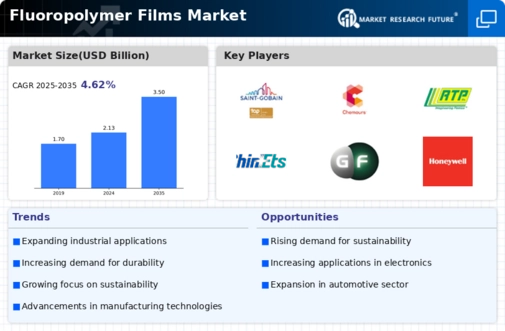
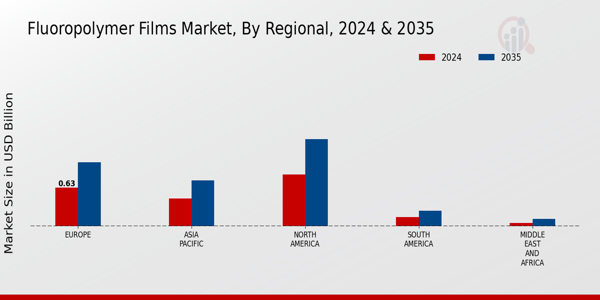

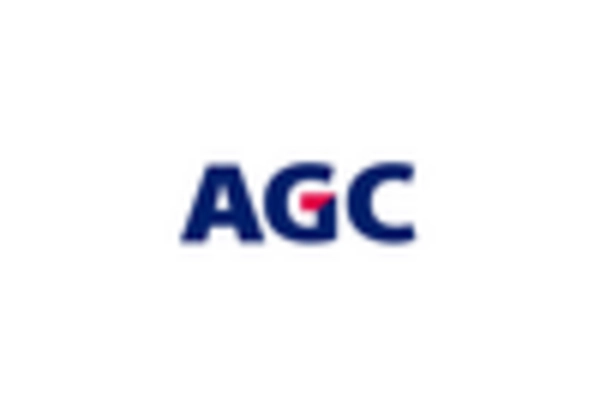
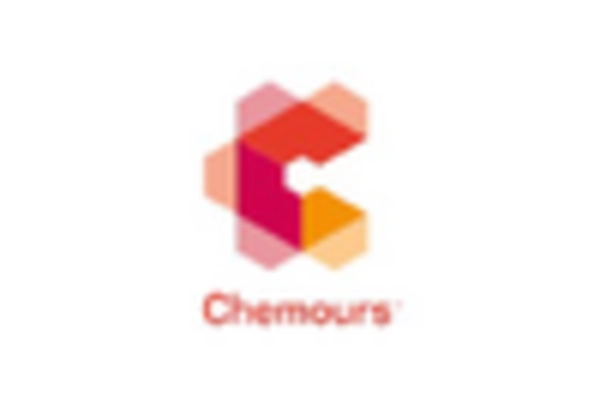


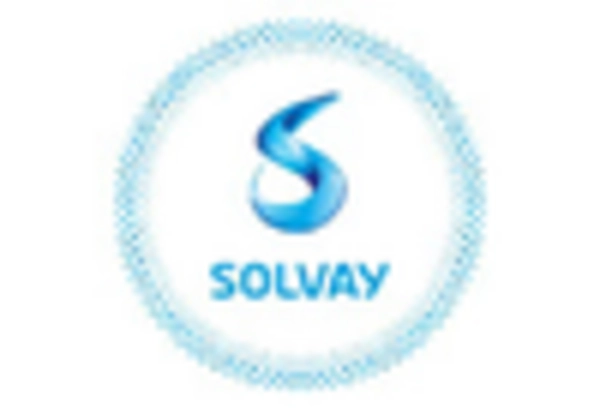

Leave a Comment